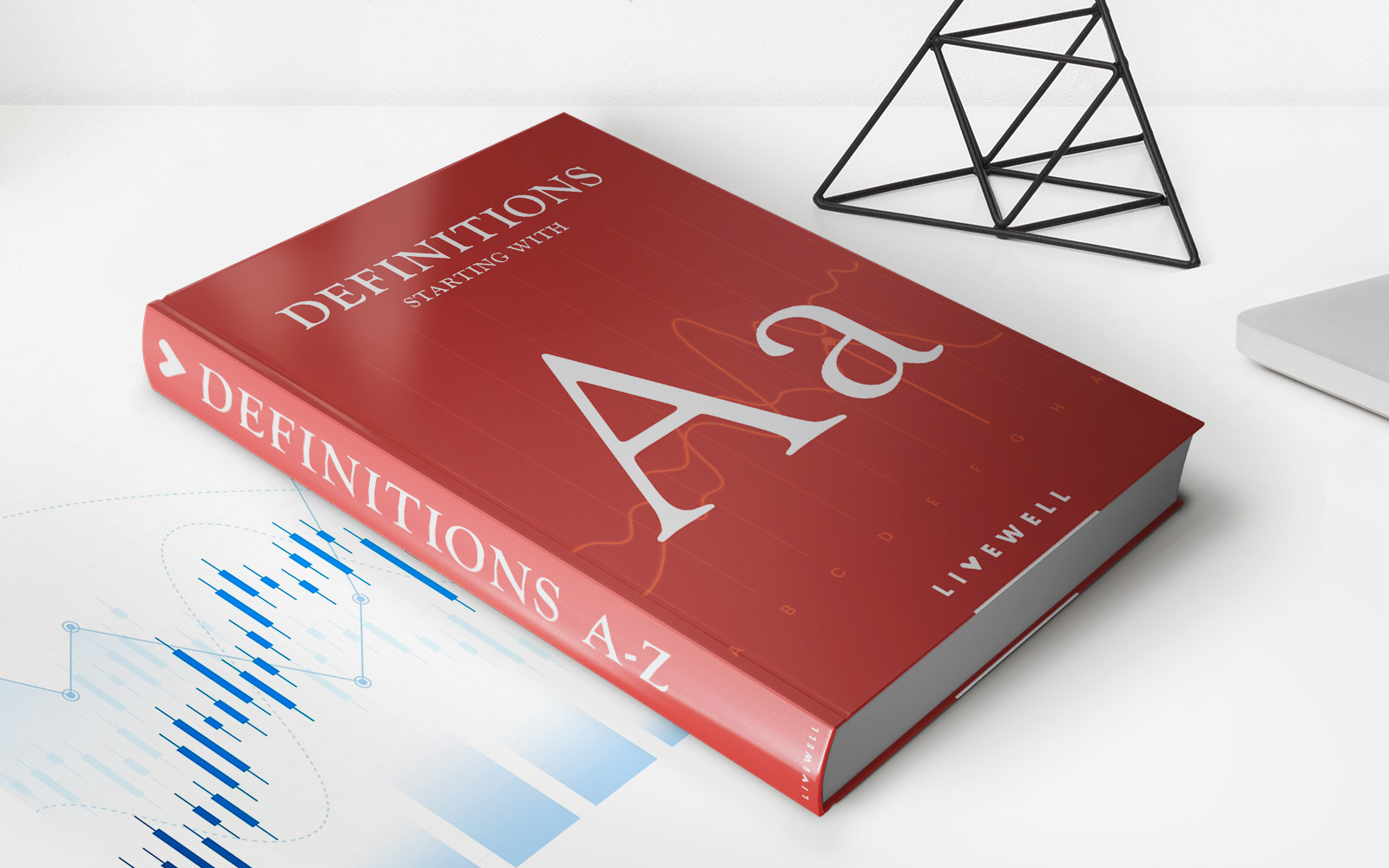

Finance
What Loans Are Covered By HMDA?
Published: February 17, 2024
Learn about the types of loans covered by HMDA and their impact on finance. Understand the regulations and reporting requirements for these loans.
(Many of the links in this article redirect to a specific reviewed product. Your purchase of these products through affiliate links helps to generate commission for LiveWell, at no extra cost. Learn more)
Table of Contents
- Understanding the Scope of HMDA in Loan Reporting
- Unveiling the Purpose and Scope of the Home Mortgage Disclosure Act
- Exploring the Categories of Loans Subject to HMDA Reporting
- Understanding the Categories of Loans Exempt from HMDA Reporting
- Navigating the Regulatory Landscape of HMDA and Loan Reporting
Introduction
Understanding the Scope of HMDA in Loan Reporting
When it comes to obtaining a loan, whether it’s for a home, business, or personal use, there are various regulations in place to ensure transparency and fair lending practices. One such crucial regulation is the Home Mortgage Disclosure Act (HMDA), which plays a pivotal role in promoting access to credit for all segments of society while also monitoring potential discriminatory lending patterns.
As a borrower, it’s essential to comprehend the implications of HMDA, as it directly impacts the types of loans that fall under its purview. By gaining insight into the loans covered and exempted under HMDA, individuals can make informed decisions and navigate the lending landscape with confidence.
In this comprehensive guide, we will delve into the intricacies of HMDA and shed light on the specific categories of loans that are subject to its reporting requirements. Additionally, we will explore the types of loans that are exempted from HMDA, providing a holistic understanding of the regulatory framework governing lending activities.
Whether you’re a prospective borrower, a financial professional, or simply an individual keen on understanding the dynamics of lending regulations, this exploration of HMDA’s scope will equip you with valuable knowledge and empower you to make well-informed financial choices.
Definition of HMDA
Unveiling the Purpose and Scope of the Home Mortgage Disclosure Act
The Home Mortgage Disclosure Act (HMDA) stands as a pivotal piece of legislation designed to provide public insights into the mortgage lending practices of financial institutions. Enacted in 1975, HMDA mandates certain financial institutions to report data regarding their housing-related lending activities, thereby facilitating the identification of potential discriminatory practices and promoting fair access to credit.
Under HMDA, covered institutions are required to collect and disclose information about the mortgage applications they receive, including details about the applicants, the type and purpose of the loan, and the outcome of the application. This data is then utilized by regulators, policymakers, and the public to evaluate lending trends, identify disparities, and enforce fair lending laws.
It’s important to note that HMDA doesn’t just apply to traditional mortgage lenders; it encompasses a broad spectrum of financial entities, including banks, credit unions, and nonbank mortgage lenders, ensuring comprehensive coverage across the lending landscape.
By shedding light on the patterns and dynamics of mortgage lending, HMDA plays a pivotal role in promoting transparency, accountability, and equal access to credit. It empowers stakeholders to identify potential issues, address disparities, and work towards a more inclusive and equitable lending environment.
Understanding the essence of HMDA is crucial for both lenders and borrowers, as it fosters a climate of responsible lending practices and ensures that all segments of society have fair and equal access to the credit they need to achieve their homeownership and financial goals.
Covered Loans under HMDA
Exploring the Categories of Loans Subject to HMDA Reporting
Under the Home Mortgage Disclosure Act (HMDA), certain types of loans are deemed as covered transactions, mandating financial institutions to collect and report data pertaining to these loans. The comprehensive scope of covered loans encompasses various categories, each playing a distinct role in shaping the lending landscape and ensuring transparency in mortgage activities.
1. Home Purchase Loans: These loans are a cornerstone of HMDA reporting, encompassing the funds extended to individuals for purchasing residential properties. Whether it’s a first-time homebuyer loan or a subsequent purchase, the details of these transactions are crucial for evaluating housing market trends and ensuring equitable access to homeownership.
2. Home Improvement Loans: When individuals seek financing for home improvement projects, such as renovations or additions, the resulting loans fall within the purview of HMDA reporting. These transactions contribute to the comprehensive understanding of housing-related lending activities and provide insights into property maintenance and enhancement endeavors.
3. Refinancing Transactions: Refinancing loans, which involve replacing an existing mortgage with a new loan, are integral to HMDA reporting. By capturing data on refinancing activities, HMDA facilitates the assessment of market trends, interest rate dynamics, and the prevalence of refinancing as a financial strategy.
4. Multi-Family and Commercial Property Loans: HMDA reporting extends beyond residential properties to encompass multi-family and commercial real estate loans. These transactions contribute to a comprehensive understanding of the broader real estate market and facilitate the evaluation of lending patterns in non-residential property sectors.
5. Home Equity Loans and Lines of Credit: Loans secured by a borrower’s equity in their home, including home equity loans and lines of credit, are also subject to HMDA reporting. These transactions play a crucial role in assessing the utilization of home equity as a source of financing for various purposes.
By encompassing these diverse categories of loans, HMDA ensures that a wide spectrum of housing-related lending activities is captured and reported, thereby fostering transparency, accountability, and fair access to credit for individuals and businesses alike.
Exempted Loans under HMDA
Understanding the Categories of Loans Exempt from HMDA Reporting
While the Home Mortgage Disclosure Act (HMDA) encompasses a broad range of lending activities, certain categories of loans are exempt from its reporting requirements. Understanding these exemptions is crucial for both financial institutions and borrowers, as it provides clarity on the specific transactions that fall outside the purview of HMDA-mandated data collection and disclosure.
1. Personal Property Loans: Loans that are not secured by real estate, such as those used for purchasing personal vehicles, furniture, or other consumer goods, are exempt from HMDA reporting. These transactions, while representing significant financial activities, fall outside the scope of HMDA’s focus on housing-related lending.
2. Temporary Financing: Short-term financing, including construction loans and bridge loans with terms of 12 months or less, is exempt from HMDA reporting. These temporary funding arrangements, often utilized during the transition between property transactions or construction phases, are not subject to the same reporting requirements as longer-term mortgage loans.
3. Vacant Land Loans: Loans secured by vacant land, without plans for immediate construction or development, are exempt from HMDA reporting. As these transactions do not directly contribute to housing or property occupancy, they fall outside the scope of HMDA’s focus on residential lending activities.
4. Business-Purpose Loans: Loans primarily intended for business or commercial purposes, even if secured by residential properties, are exempt from HMDA reporting. These transactions are distinct from consumer-focused mortgage activities and are thus not subject to the same data collection and disclosure requirements.
5. Reverse Mortgages: Loans structured as reverse mortgages, which enable older homeowners to convert home equity into income, are exempt from HMDA reporting. Given the unique nature of reverse mortgage arrangements, they are not included in the scope of HMDA-mandated data collection.
By delineating these exemptions, HMDA provides clarity on the specific loan categories that do not require reporting, thereby streamlining the data collection process for covered institutions and ensuring that the focus remains on housing-related lending activities.
Conclusion
Navigating the Regulatory Landscape of HMDA and Loan Reporting
As we conclude our exploration of the Home Mortgage Disclosure Act (HMDA) and its impact on loan reporting, it becomes evident that this regulatory framework plays a pivotal role in promoting transparency, accountability, and fair access to credit within the lending landscape. By delineating the categories of loans covered and exempted under HMDA, we gain valuable insights into the scope and implications of this critical legislation.
For borrowers, understanding the types of loans subject to HMDA reporting empowers informed decision-making when seeking financing for home purchases, improvements, refinancing, or other housing-related needs. It underscores the importance of fair lending practices and the availability of comprehensive data to evaluate lending trends and disparities.
Simultaneously, for financial institutions and lenders, navigating the nuances of HMDA’s coverage and exemptions is crucial for compliance and responsible lending practices. By adhering to HMDA’s reporting requirements for covered loans while recognizing the exemptions for certain transactions, institutions contribute to a more transparent and inclusive lending environment.
By shedding light on the dynamics of mortgage lending and housing-related financing, HMDA fosters a climate of equitable access to credit, enabling individuals and businesses to pursue their homeownership and property investment goals with confidence. It also serves as a catalyst for identifying potential discriminatory practices and addressing disparities in lending, thereby contributing to a more inclusive and just financial ecosystem.
As we move forward, the continued adherence to HMDA’s reporting requirements and the ongoing evaluation of its scope will be instrumental in shaping a lending landscape that is characterized by fairness, transparency, and equal opportunity for all. By embracing the principles of HMDA and recognizing its significance in the realm of loan reporting, we can collectively contribute to a financial environment where access to credit is not just a possibility but a fundamental right for every individual and business.














